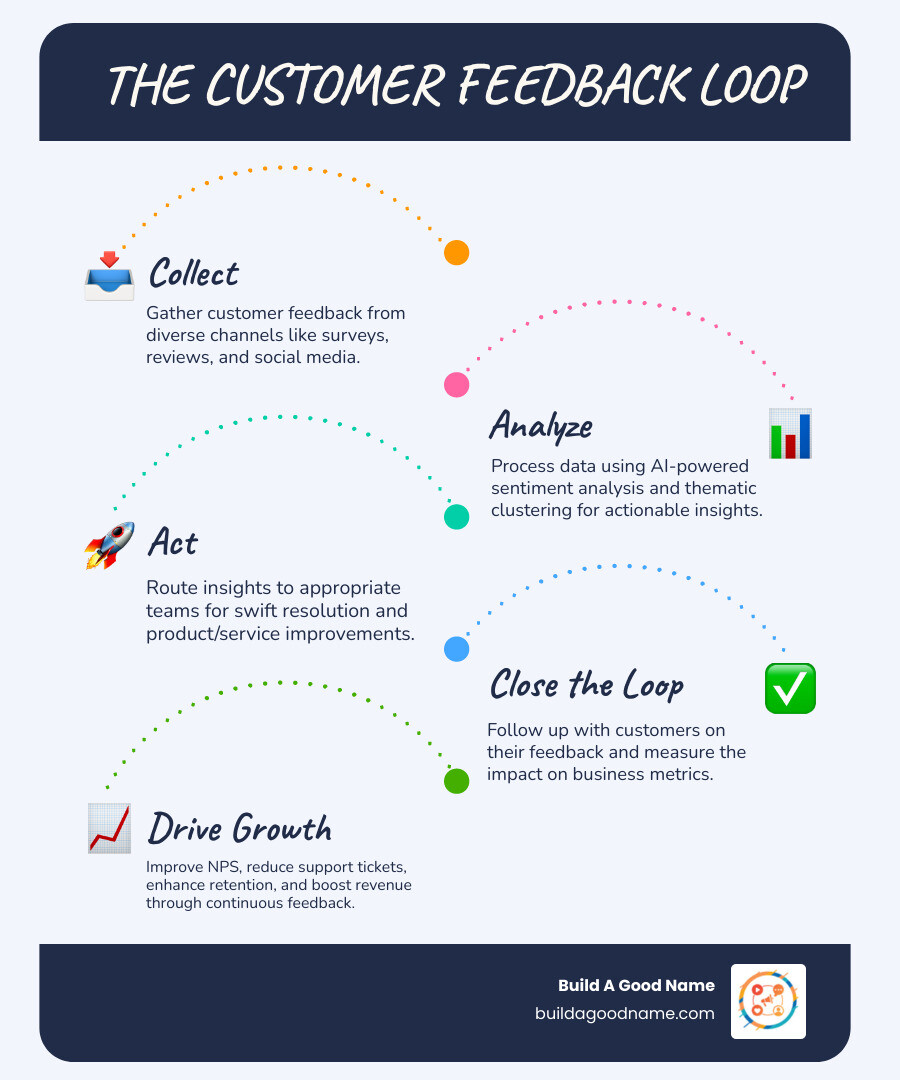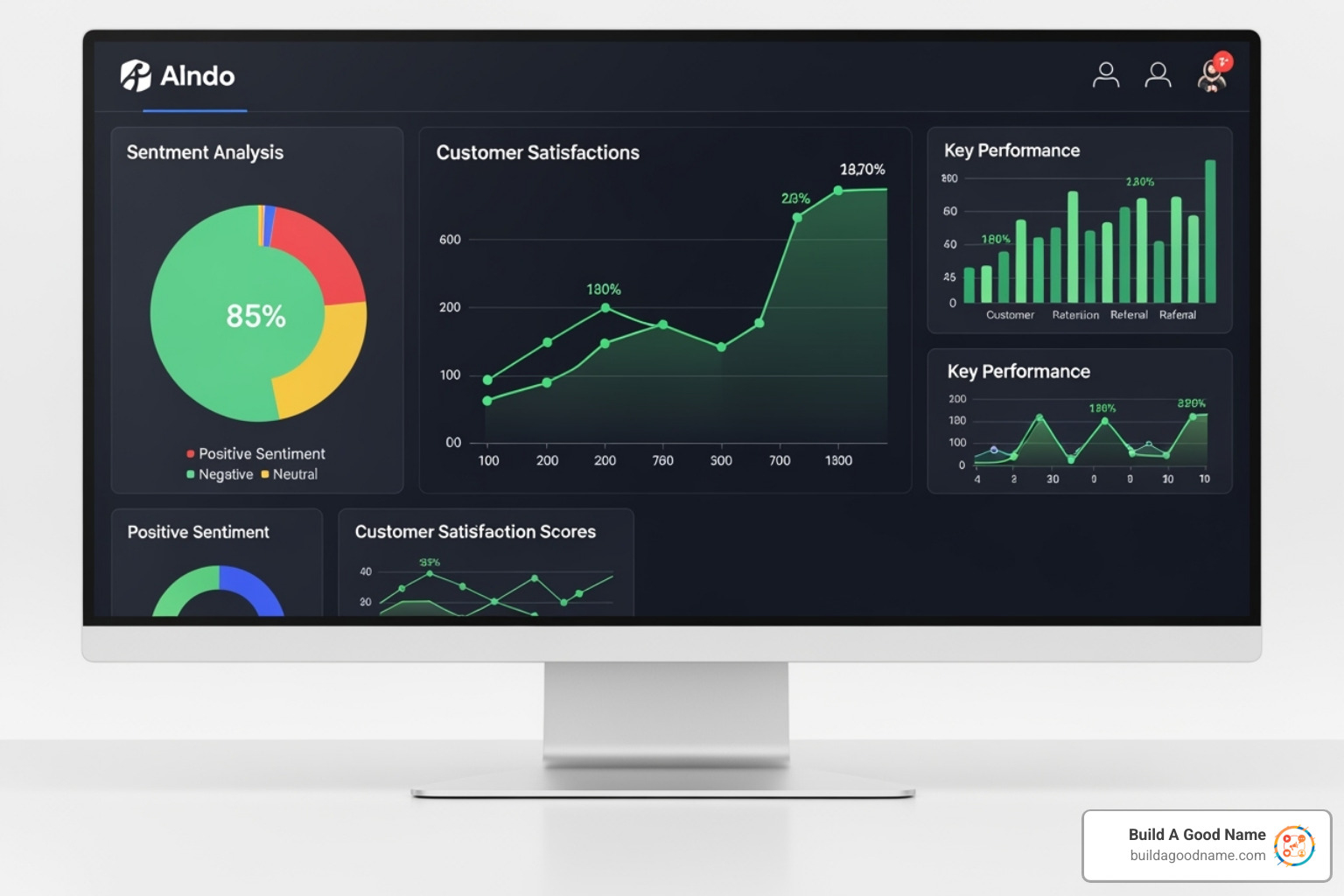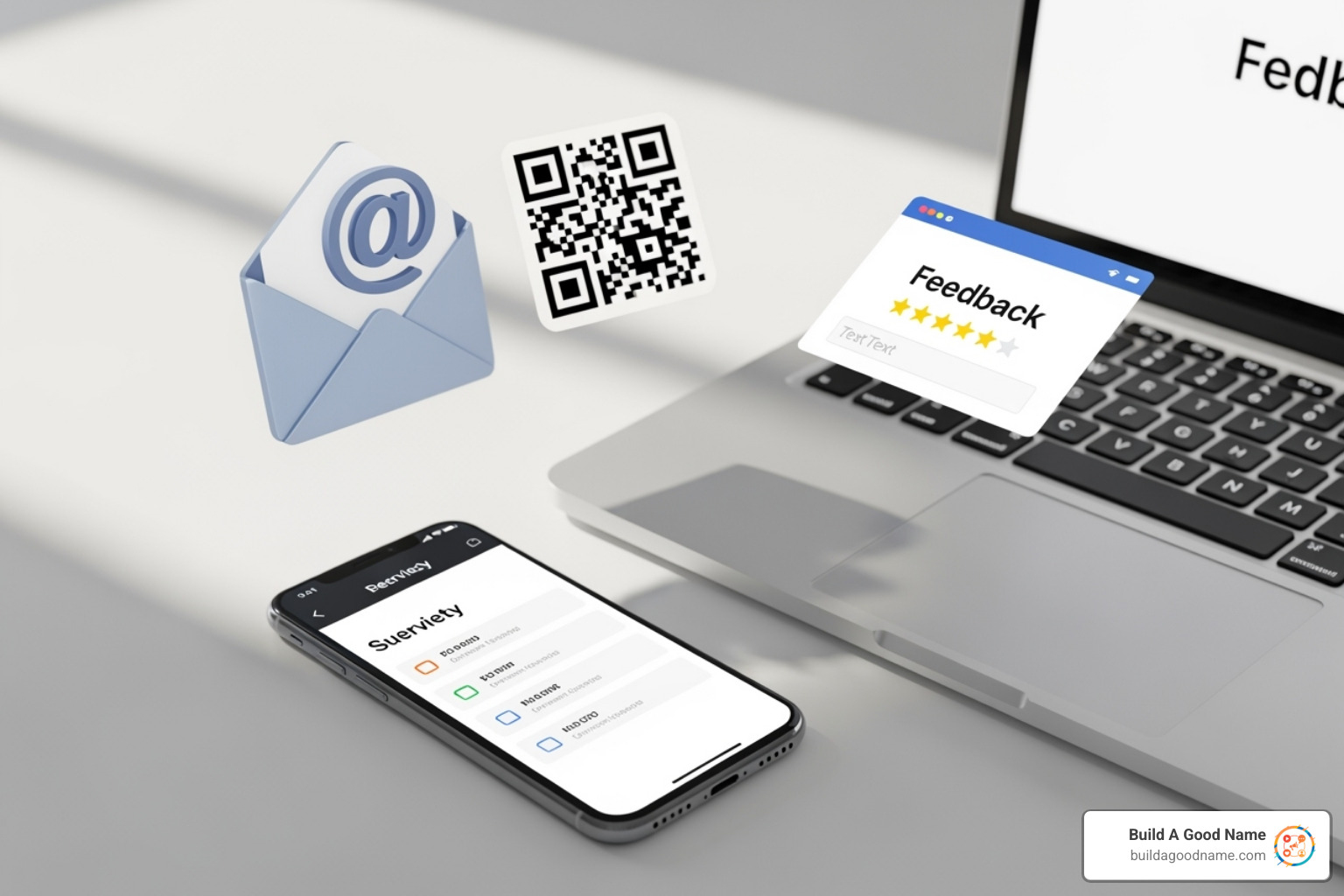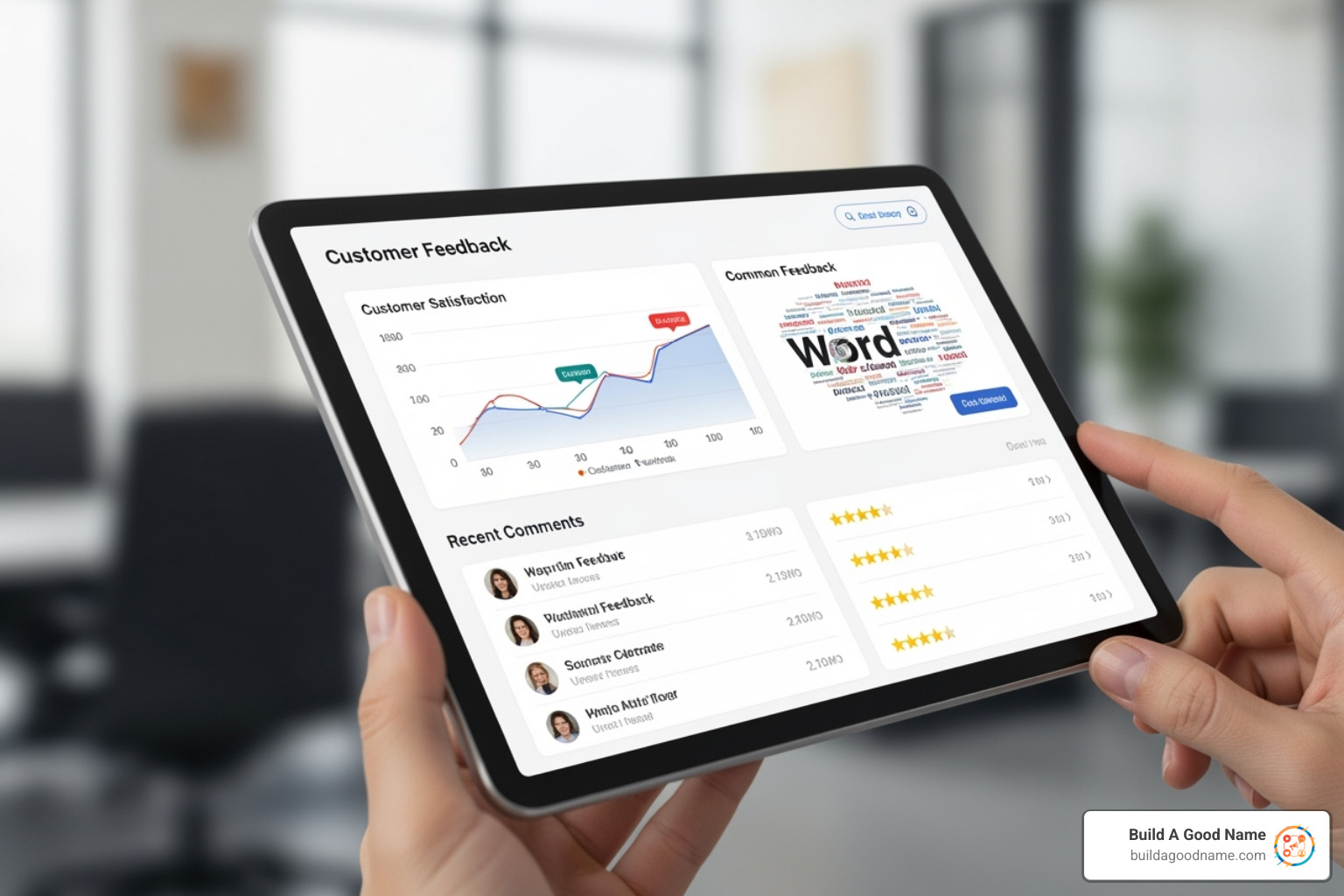Why Customer Feedback Platforms Are Essential for Modern Businesses
A customer feedback platform is a digital tool that helps businesses collect, organize, analyze, and act on customer feedback from multiple channels in one centralized location. Instead of juggling spreadsheets and emails, these platforms automate the entire feedback loop to drive better customer experiences and business growth.
Key components of customer feedback platforms:
- Multi-channel collection – Surveys, widgets, reviews, social media, and support tickets
- Automated analysis – AI-powered sentiment analysis and thematic clustering
- Centralized dashboard – All feedback streams in one organized view
- Action workflows – Route insights to the right teams for swift responses
- Integration capabilities – Connect with CRM, project management, and support tools
- Reporting and analytics – Track metrics like NPS, CSAT, and customer satisfaction trends
The numbers tell the story. Companies using these tools report significant NPS improvements of 15 points within months and have seen feedback review time drop from hours per week to under 10 minutes. The right platform transforms scattered feedback into actionable business intelligence.
For busy business owners, the choice is clear. Manual feedback management leaves money on the table. Modern platforms not only save time but also help reduce support tickets by 20% while improving customer retention and driving revenue growth.

Similar topics to customer feedback platform:
Understanding the Power of a Customer Feedback Platform
Trying to understand your customers when their feedback is scattered across emails, conversations, and sticky notes is inefficient. You miss important details and fail to see the complete picture.
A customer feedback platform changes everything by creating a single, organized space where all customer voices come together. It’s your business’s listening headquarters, ensuring every comment, suggestion, and concern gets the attention it deserves.
The results speak for themselves. When businesses actively use customer feedback, 77% of customers view those brands more favorably. This isn’t just about creating goodwill; it’s about making smarter business decisions.
When you understand what your customers need, your products improve, your services become more helpful, and your customers stick around longer. Sales teams close more deals by solving real problems, and customer retention improves because you fix issues before they become deal-breakers. The right platform helps you pivot quickly based on feedback, creating more value for both your customers and your bottom line. For more insights on building this foundation of trust, check out our guide on why reputation management matters for your brand.
If youre unfamiliar with metrics like Net Promoter Score, you can learn more about how its calculated and why it matters on Wikipedia.

The Core Functionalities
A solid customer feedback platform has three main jobs: collect feedback from everywhere, make sense of it, and help you take action.
Feedback collection happens across multiple channels. Your platform should gather insights from surveys (NPS, CSAT), website widgets, email campaigns, reviews, social media, and even support tickets. Some platforms support QR codes for physical businesses, making it easy for customers to share feedback from anywhere.
Feedback analysis is where modern platforms shine. Sentiment analysis automatically identifies if feedback is positive, negative, or neutral. Thematic clustering finds common themes in hundreds of comments, revealing patterns you might otherwise miss. Everything is presented in a centralized dashboard that turns raw data into clear insights.
Action and collaboration turn insights into results. Automation workflows can send urgent feedback straight to the right team. Integrations connect your feedback platform with your CRM, project management, and support tools, embedding insights into your daily work. Most importantly, this enables closing the feedback loop by responding to customers, which builds trust and loyalty.
For a deeper dive into these processes, explore our comprehensive guide on customer feedback management.
How Platforms Serve Different Teams
A good customer feedback platform helps different teams work better together, providing shared insights for a unified goal.
- Product teams use feedback to build better products. They can prioritize features based on customer demand, track bugs, and validate new ideas before investing resources. Public roadmaps can show customers what’s coming next, building excitement and trust.
- Marketing teams turn feedback into powerful campaigns. They use insights to personalize content, identify conversion problems, and manage online reputation by monitoring brand sentiment.
- Customer experience teams track satisfaction scores like NPS and CSAT to spot problems early. They streamline issue resolution by routing complaints to the right people and map the customer journey to find friction points.
- Sales teams can log feature requests from prospects and follow up when those features are built, helping to close deals.
This shared approach ensures everyone is working from the same playbook, focused on customer satisfaction and business growth. To learn more about how these systems fit into larger business strategies, check out our insights on management feedback systems.
Key Features to Look For in a Customer Feedback Platform
When shopping for a customer feedback platform, focus on the fundamentals and smart automation that modern businesses need. A powerful platform must seamlessly capture feedback from all touchpoints—your website, apps, email, SMS, and even QR codes.

Look for a platform that works automatically behind the scenes. Key features include:
- Multi-channel collection: Website widgets, in-app surveys, email, SMS, and visual feedback tools.
- Automation workflows: Trigger surveys based on customer actions and route urgent feedback to the right teams instantly.
- Integration capabilities: Connect with your existing CRM, project management tools (like Jira), support desks, and communication platforms (like Slack).
- Security and compliance: Ensure the platform meets standards like GDPR and SOC 2 to protect customer data.
- Customization and branding: Maintain a consistent brand experience across all surveys and dashboards.
The Rise of AI and Automation
AI is genuinely changing how customer feedback platforms work. Gone are the days of manually sifting through comments. AI-powered analysis can perform sentiment analysis, group feedback into themes, and summarize comment threads automatically.
Some platforms use anomaly detection to spot unusual patterns, like a sudden spike in complaints, alerting you before small issues become big problems. A game-changing feature is automated personalized review replies. AI can generate human-like, personalized responses that maintain your brand voice, saving enormous amounts of time for businesses focused on reputation management.
Predictive insights are the next frontier, identifying at-risk customers based on feedback patterns and connecting themes to business metrics like revenue. As highlighted in research, understanding The Business Value of a Good Customer Experience becomes much more measurable when AI helps you understand which feedback matters most to your bottom line.
For more insights on how AI is reshaping business reviews, check out our detailed guide on AI for business reviews.
What to consider when choosing a customer feedback platform
Choosing the right customer feedback platform is a strategic decision. Here’s what to consider:
- Scalability: The platform should handle your feedback volume now and as you grow.
- Ease of Use: An intuitive interface is crucial for both your team and your customers. If it’s confusing, it won’t be used.
- Pricing Models: Understand the costs. Models vary (per user, per response, tiered plans), so find one that aligns with your budget and growth plans.
- Free Trials and Demos: Always test the platform with your specific use cases and integrations before committing.
- Customer Support: Look for providers with a reputation for quick, helpful support, as you’ll inevitably have questions.
For businesses focused on online reviews, our guide on review management software offers additional insights into choosing the right tools.
From Insight to Impact: Leveraging Feedback for Business Growth
The real magic of a customer feedback platform happens when you transform insights into actions that drive business growth. It becomes a strategic partner, turning scattered opinions into focused improvements.
Following the trail of customer feedback leads to meaningful changes that boost loyalty. Key benefits include:
- Improving products and services: Instead of guessing, you get direct answers from users about what features to build or what service gaps to fix.
- Enhancing the customer journey: By seeing where customers get stuck or delighted, you can smooth out friction points and amplify what works.
- Building public roadmaps: Showing customers how their feedback shapes your decisions builds transparency and trust. They feel like partners in your success.
- Boosting customer loyalty and retention: When customers feel heard and see their feedback making a difference, they stick around and become advocates for your brand.

For more insights on building this kind of lasting customer trust, check out our guide on how to build customer trust.
The role of a customer feedback platform in product development
For product teams, a customer feedback platform is essential. It provides a direct line to users, helping you build what they need.
- Feature request tracking: Ideas are captured in one place, allowing the whole team to see patterns emerge.
- Prioritization frameworks: Make smart decisions on what to build next based on customer demand, effort, and strategic value.
- Bug reporting: Get detailed reports with screenshots and context, leading to faster fixes and happier customers.
- User acceptance testing: Gather targeted feedback on new features before a full rollout to ensure they solve the right problems.
- Validating ideas: Test concepts with real users early, reducing development risks and ensuring market fit before launch.
Driving Revenue and Reputation
Feedback platforms prove their worth in dollars and cents by connecting customer satisfaction to business success.
- Connecting feedback to revenue: Track which improvements lead to increased sales, higher customer lifetime value, or reduced churn.
- Identifying churn risks: Proactively flag unhappy customers from their feedback, giving you time to intervene and save the relationship.
- Generating positive reviews: Satisfied customers are more likely to share positive experiences publicly, boosting your reputation.
- Improving online reputation: Systematically monitor feedback, respond quickly to concerns, and showcase positive experiences to shape your brand’s perception.
This is where our expertise at Build A Good Name comes in. Our AI-powered platform helps businesses turn satisfied customers into vocal advocates. To learn more, explore our guide on how to improve online reviews.
Frequently Asked Questions about Customer Feedback Platforms
Here are answers to the most common questions business owners have about customer feedback platforms.
How do feedback platforms help with negative feedback?
Negative feedback is a valuable asset. A good customer feedback platform turns it into an opportunity.
- Instant Flagging: The platform uses AI to immediately identify and flag negative sentiment. No more unhappy comments sitting unnoticed.
- Smart Routing: It automatically routes the feedback to the right team member—billing, tech support, or customer service—for a fast response.
- Rich Context: Platforms provide details like screen recordings or user activity, helping your team understand the root cause of the problem.
- Personalized Responses: The system helps you craft empathetic responses that show you’re listening. This personal touch can turn angry customers into loyal advocates.
By analyzing trends in negative feedback, you can fix systemic issues before they affect more customers. For more strategies, see our guide on how to filter negative reviews.
How long does it take to implement a feedback platform?
Implementation time varies, but modern platforms are designed for speed.
- Simple Setup (Minutes to Hours): For basic feedback collection, like a website survey, you can be live very quickly. Just sign up, customize a template, and deploy.
- Integrated Setup (A Few Days): Connecting the platform to existing tools like your CRM or support desk typically takes a few days of configuration and testing.
- Complex Enterprise Setup (A Few Weeks): For large operations with custom integrations and specific compliance needs, a full implementation may take a few weeks, often with dedicated support from the provider.
You can start simple and gather insights immediately, adding more advanced features over time.
How do you measure the ROI of a customer feedback platform?
Measuring the return on your investment is crucial. A customer feedback platform provides clear, trackable metrics.
ROI can be measured by tracking key metrics like:
- Satisfaction Scores: Improvements in Net Promoter Score (NPS), Customer Satisfaction (CSAT), and Customer Effort Score (CES).
- Customer Retention: A reduction in customer churn rates.
- Operational Efficiency: A decrease in support ticket volume (some businesses report a 20% reduction) and faster issue resolution times.
- Revenue Growth: An increase in customer lifetime value (LTV) and sales close rates.
- Online Reputation: A higher volume of positive online reviews, which boosts search rankings and conversions.
Establish baseline metrics before you start so you can accurately track your progress.
Conclusion
It’s clear that customer feedback platforms have evolved from simple survey tools into the strategic core of customer-centric businesses. They have fundamentally changed how companies listen, understand, and act on the voice of the customer.
We’ve moved from scattered spreadsheets to intelligent systems that automatically spot patterns, route urgent feedback, and help craft personalized responses. Businesses using these platforms see tangible results, including NPS improvements of 15 points and 20% reductions in support tickets.
Modern platforms bring everyone together. Product, marketing, and customer service teams can align around a shared understanding of the customer, turning frustrated users into fans and good ideas into great features.
The future is even smarter. AI will enable platforms to predict what might happen next, identifying at-risk customers or flagging the next big feature opportunity from thousands of comments.
This is where BuildAGoodName fits in. We know that online reviews are a critical form of customer feedback. Our AI-powered review management software helps you showcase positive reviews and respond to all feedback with a personal touch that builds lasting relationships.
Choosing the right customer feedback platform is an investment in your customer relationships. It shows them their voice matters and their experience is your priority.
Ready to turn customer voices into your competitive advantage? Take control of your online reputation and let every piece of feedback become a building block for your success.
Want to dive even deeper? Learn more about mastering reputation management in business today and find how the right approach can transform your entire business.



